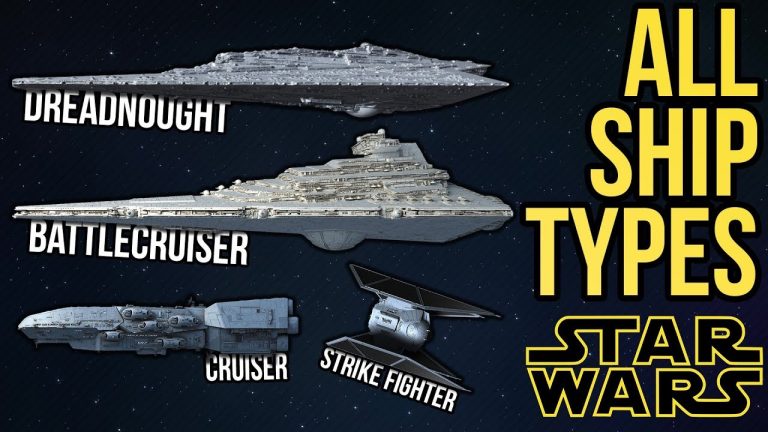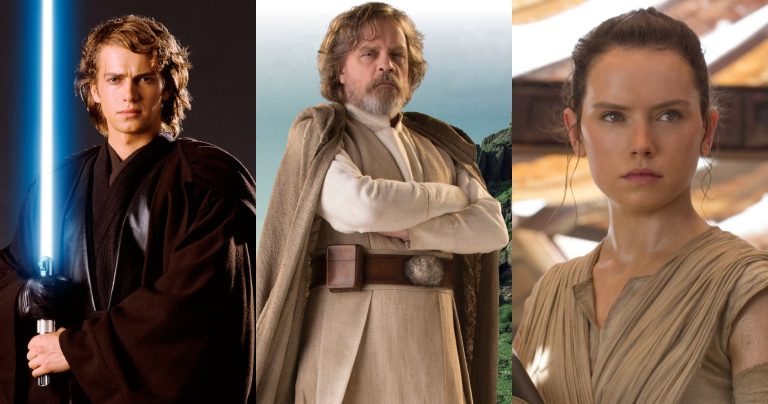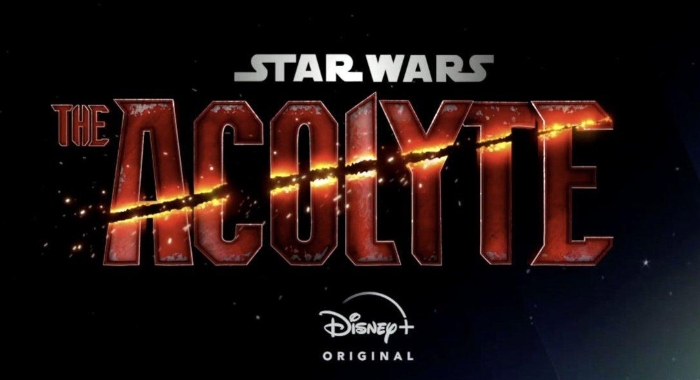How Many Death Stars Are There In The Star Wars Movies?
If you’ve ever wondered just how many Death Stars there are in the Star Wars movies, then you’ve come to the right place. Prepare to embark on a journey through the galaxy far, far away as we delve into the iconic Death Star and its various iterations. From the original Death Star that struck fear into the hearts of rebels to its powerful successor, the Death Star II, we’ll explore the fascinating history of these planet-destroying superweapons. So, grab your lightsaber and let’s dive into the world of Star Wars!
In the Star Wars universe, the Death Star is undoubtedly one of the most iconic and awe-inspiring creations. But just how many Death Stars have graced the big screen? Well, if you thought there was only one, think again! Throughout the Star Wars saga, we’ve been introduced to not just one, but three Death Stars. Each one more imposing and destructive than the last. From the original Death Star, capable of obliterating entire planets, to the Death Star II, which made its debut in “Return of the Jedi.” And let’s not forget about the Starkiller Base, a planet converted into a superweapon in “The Force Awakens.” So, buckle up and get ready to explore the epic saga of the Death Stars in the Star Wars movies!

How Many Death Stars Are There in the Star Wars Movies?
The Death Star, a massive space station capable of destroying entire planets, is one of the most iconic symbols of the Star Wars universe. Throughout the series, several Death Stars have been introduced, each playing a significant role in the galactic conflict between the Rebel Alliance and the Galactic Empire. In this article, we will explore the number of Death Stars that have appeared in the Star Wars movies and delve into their importance within the storyline.
The First Death Star
The first Death Star was introduced in the original Star Wars film, “Episode IV: A New Hope.” This colossal battle station, measuring approximately 120 kilometers in diameter, was the pinnacle of Imperial engineering. Its primary purpose was to instill fear and maintain control over the galaxy. Equipped with a planet-destroying superlaser, the Death Star posed a grave threat to any planet that dared to oppose the Empire.
Construction and Destruction
The construction of the first Death Star took several years and required the resources of countless star systems under Imperial rule. However, its reign of terror was short-lived. The Rebel Alliance, led by Luke Skywalker, Princess Leia, and Han Solo, launched a daring attack on the Death Star, exploiting a critical vulnerability in its design. Luke Skywalker successfully fired a proton torpedo into the station’s thermal exhaust port, resulting in a chain reaction that led to its ultimate destruction.
Impact and Legacy
The destruction of the first Death Star was a significant victory for the Rebel Alliance, inspiring hope and galvanizing resistance against the oppressive rule of the Galactic Empire. Its demise also marked a turning point in the Star Wars saga, leading to the eventual downfall of the Empire. The events surrounding the first Death Star’s destruction became a symbol of rebellion and defiance for generations to come.
The Second Death Star
Despite the destruction of the first Death Star, the Empire was not deterred. In “Episode VI: Return of the Jedi,” the second Death Star made its appearance, showcasing the Empire’s determination to maintain control. This larger and more powerful battle station was still under construction but posed an even greater threat to the Rebel Alliance.
The Battle of Endor
The Rebel Alliance, aware of the Empire’s plans to complete the second Death Star, launched a daring mission to destroy it. The Battle of Endor became a pivotal moment in the Star Wars saga, with the fate of the galaxy hanging in the balance. Luke Skywalker, alongside his allies, engaged in a multi-pronged attack on the Death Star, while a ground assault took place on the forest moon of Endor.
Final Destruction
During the climactic battle, the Rebel Alliance successfully destroyed the second Death Star by capitalizing on its incomplete state. The station’s superlaser was fired prematurely, leading to a catastrophic chain reaction that resulted in its complete annihilation. This victory marked the end of the Empire’s reign and the beginning of a new era of peace and freedom.
Other Death Star References
In addition to the two primary Death Stars, there have been other references and appearances of Death Star-like structures in the Star Wars movies. These include Starkiller Base in “Episode VII: The Force Awakens” and the Sith Eternal fleet in “Episode IX: The Rise of Skywalker.” While these structures shared similarities with the Death Star, they were not exact replicas and had their own unique capabilities.
Starkiller Base
Starkiller Base, built by the First Order, was a massive superweapon capable of harnessing the energy of a star to destroy entire star systems. While resembling a planet, it operated similarly to the Death Star, instilling fear and exerting control over the galaxy. However, like its predecessors, Starkiller Base met its demise at the hands of the Resistance.
The Sith Eternal Fleet
The Sith Eternal fleet, under the command of Emperor Palpatine, featured Sith Star Destroyers equipped with planet-destroying cannons. Although not explicitly referred to as Death Stars, these vessels were reminiscent of the Death Star’s destructive capabilities and represented the ongoing legacy of the Empire.
In conclusion, the Star Wars movies have featured multiple Death Stars, each playing a crucial role in the ongoing conflict between the Rebel Alliance and the Galactic Empire. The destruction of these superweapons has been pivotal in shaping the events of the Star Wars saga, inspiring hope, and ultimately leading to the downfall of the Empire. Through these iconic battle stations, the Death Star has become an enduring symbol of power, rebellion, and the eternal struggle between good and evil in the galaxy far, far away.
Key Takeaways: How Many Death Stars are There in the Star Wars Movies?
- There are three Death Stars in the Star Wars movies.
- The Death Star is a massive space station capable of destroying planets.
- The first Death Star appeared in “Star Wars: Episode IV – A New Hope”.
- The second Death Star was featured in “Star Wars: Episode VI – Return of the Jedi”.
- A third Death Star, known as Starkiller Base, appeared in “Star Wars: Episode VII – The Force Awakens”.
Frequently Asked Questions
How many Death Stars have appeared in the Star Wars movies?
The Star Wars movies have featured a total of three Death Stars. The Death Star is a massive space station and superweapon capable of destroying entire planets. The first Death Star was introduced in the original Star Wars film, “A New Hope.” It was destroyed by the Rebel Alliance during the Battle of Yavin. The second Death Star appeared in “Return of the Jedi” and was destroyed during the Battle of Endor. The third Death Star, known as Starkiller Base, was featured in “The Force Awakens” and was destroyed by the Resistance.
Each Death Star has represented a significant threat to the galaxy and has played a crucial role in the overarching story of the Star Wars saga. Despite their destructive power, the Death Stars have ultimately been defeated by the heroes of the Rebellion and Resistance.
What are the key features of the Death Star?
The Death Star is a colossal space station with a diameter of approximately 120 kilometers. It is equipped with a planet-destroying superlaser capable of obliterating entire worlds. The station also houses numerous hangars, docking bays, and living quarters for its crew, which can number in the hundreds of thousands.
Additionally, the Death Star is heavily fortified with turbolasers, ion cannons, and defensive shields to protect it from enemy attacks. It has the ability to travel through hyperspace, allowing it to move swiftly across the galaxy and strike at its targets with devastating force.
Who built the Death Stars?
The Death Stars were constructed by the Galactic Empire, a totalitarian regime led by Emperor Palpatine. The construction of these immense space stations required the combined efforts of thousands of engineers, scientists, and laborers. The first Death Star, known as the Death Star I, was built in secret and took nearly two decades to complete.
The second Death Star, known as the Death Star II, was a larger and more powerful version of its predecessor. It was constructed above the forest moon of Endor, utilizing the Empire’s vast resources and enslaved alien species.
Why were the Death Stars built?
The primary purpose of the Death Stars was to serve as symbols of the Empire’s dominance and to instill fear in its subjects. They were designed to be ultimate weapons of mass destruction, capable of annihilating entire planets and crushing any resistance to Imperial rule.
Additionally, the Death Stars were intended to act as mobile command centers and staging areas for Imperial military operations. Their size and firepower made them formidable weapons of war and allowed the Empire to project its power across the galaxy.
How were the Death Stars destroyed?
The first Death Star was destroyed during the Battle of Yavin when Luke Skywalker successfully fired proton torpedoes into a small thermal exhaust port, triggering a chain reaction that caused the station to explode. In “Return of the Jedi,” the Rebel Alliance launched an assault on the second Death Star above Endor, ultimately destroying it by disabling its shield generator and launching a successful attack on its vulnerable core.
Starkiller Base, the third Death Star, was destroyed by Resistance pilot Poe Dameron and a team of heroes. They managed to infiltrate the base and plant explosives, causing a catastrophic explosion that obliterated the superweapon.
The Death Stars Compared (Legends) – Star Wars Explained
Final Summary: The Death Stars in the Star Wars Movies
Well, my fellow Star Wars enthusiasts, we’ve reached the end of our Death Star journey. After diving into the captivating world of the Star Wars movies, we now know just how many Death Stars have graced the silver screen. And let me tell you, it’s been quite the epic adventure!
In total, there have been three Death Stars featured in the Star Wars movies. The first Death Star made its debut in “Star Wars: A New Hope,” where it struck fear into the hearts of rebels and fans alike. This colossal superweapon was an engineering marvel, capable of obliterating entire planets with its planet-destroying laser. However, as we all know, the brave Rebel Alliance managed to find its weakness and ultimately destroyed it in a thrilling climax.
But the Empire wasn’t ready to give up on their Death Star dreams just yet. In “Star Wars: Return of the Jedi,” we were introduced to the second Death Star. This upgraded version had a more formidable design and was even larger than its predecessor. However, thanks to the cunning plans of our heroes and the power of the Force, this Death Star met the same explosive fate as the first.
Now, you might be thinking, “Wait a minute, you said there were three Death Stars!” And you’re absolutely right! In the latest installment of the Skywalker saga, “Star Wars: The Rise of Skywalker,” we were introduced to the mysterious and menacing Final Order fleet, which included a massive superweapon known as the Sith Eternal fleet. Among this fleet was a colossal structure known as the Sith Star Destroyer, which could be considered a Death Star in its own right.
So, there you have it, my friends. Three Death Stars that have left an indelible mark on the Star Wars universe. From the original Death Star that sparked our imaginations to the final showdown in “The Rise of Skywalker,” these superweapons have captivated audiences for generations. May the Force be with us as we continue to explore the vast reaches of the Star Wars galaxy!





